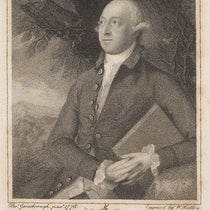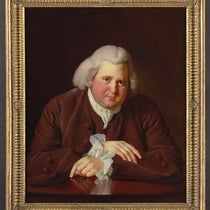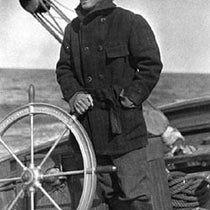Scientist of the Day - Paul Broca
Paul Broca, a French physician, anatomist, pathologist, and physical anthropologist, was born June 28, 1824, in Bordeaux. He attended medical school in Paris, then worked his way up the medical ranks, serving as intern for various noted surgeons and anatomists at the Paris Medical School, including a term as prosector, demonstrating anatomical features in cadavers for lecturers in anatomy, before finally receiving his doctorate in medicine in 1849. He would spend most of his career on the faculty of the medical school of the University of Paris, but he was also associated with half-a-dozen hospitals in metropolitan Paris.
Broca’s name is known today, even to those outside the medical profession, because of a patient he first saw on Apr. 12, 1861. The man was named Laborgne; he was 51 years old, and had been hospitalized for 20 years, after he lost his ability to speak. He was transferred to Broca's surgical ward because he had gradually become paralyzed on his right side and now exhibited symptoms of gangrene in his paralyzed right leg. Broca was intrigued by Laborgne's inability to speak, because it appeared his mouth and tongue had normal function, and thus the problem was one of loss of control, which meant a disruption in the brain. Laborgne could not say his name, only the word "Tan," which became his name (and the name of his brain) in much of the medical literature.
When Laborgne died within a week, Broca did an immediate autopsy, and found that the patient had a lesion on one of the left frontal lobes of his brain, specifically on the "third convolution" of the left frontal lobe (second image). Broca gave a presentation to the Society of Anatomy the next day and proposed that the area affected by the lesion was the area responsible for speech. At the time, there was intense debate about whether certain functions, such as speech, were localized in the brain. Most physicians opposed the idea, primarily because belief in the localization of cerebral functions was a key element of the now-discredited science of phrenology, which maintained that you could learn about a person’s mental faculties by studying the local variations in the shape of his or her skull. However, over the next two years, Broca accumulated 8 cases of what he called aphémie, and we would call aphasia, and each one was correlated with damage to the area of the left frontal lobe that is now called "Broca's area" (third image). He gave his final paper on the subject in 1865, published in the Bulletins de la Société d'Anthropologie in 1865, a society and a journal that he himself had founded 6 years earlier. He had established that, in the case of speech, the speech center is localized in the brain, and had suggested the possibility that other "executive functions" are also localized, which would later be confirmed. He had also shown that the left and right brains may appear to be mirror organs, but they are not symmetrical with respect to function.
About this time, Broca became interested in physical anthropology and craniometry, the measurement of skulls and brains in order to see if there is a correlation between any of these measurements and intelligence. It is hard to deal with this subject dispassionately, because we find extremely distasteful the belief that the European brain is naturally superior to that of non-European races, and Broca certainly believed this. But so did every other European of the 1860s, and indeed through the end of the century, and it is not fruitful to just dismiss them all as blind racists. To his credit, Broca did believe that all humans belong to one species, which was not the case with many who continued to defend slavery. But we still are not happy that a humane man like Broca spent so much time trying to find correlations between brain measurements and human intelligence. We would prefer that he had stuck to searching out correlations between brain lesions and faculties.
The brain of patient Laborgne (along with many others studied by Broca) was preserved for 150 years in the Musée Dupuytren in Paris, before that Museum was closed in 2016 and its contents moved to another museum at the University of Paris Medical School. I am not sure exactly where Laborgne’s brain is right now. It has been called the most famous brain in the history of the neurosciences, although I would think Einstein's brain might give it a run for the money in any "most famous" competition. Broca died in 1880, only 56 years old, and his own brain is preserved in the Museum de l’Homme, also in Paris. Coming across it during a visit inspired Carl Sagan to meditate on the nature of humanity, leading to an essay, and then a collection of essays, called Broca’s Brain: Reflections on the Romance of Science (1979). You can read Sagan's original essay, before it became part of a book, at this link (it is a pdf and can be slow to load). Sagan did a nice job of explaining why we should not be too harsh on Broca for his later-life foray into the dark forest of intelligence and race.
Since we are not a medical library, we have nothing by Broca (that I could discover) in our serials collections. I would like to have shown you his 1865 paper in the Bulletin of the Society of Anthropology, but while we have a run of this journal, our holdings don’t begin until long after Broca’s death.
William B. Ashworth, Jr., Consultant for the History of Science, Linda Hall Library and Associate Professor emeritus, Department of History, University of Missouri-Kansas City. Comments or corrections are welcome; please direct to ashworthw@umkc.edu.









